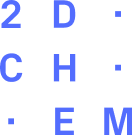STELAH logra avances clave en una nueva generación de electrolizadores más eficientes y escalables para producir hidrógeno verde
Bottom-up nanofabrication of bidimensional pnictogens: a molecular approach
We are pleased to inform that our recent project “Bottom-up nanofabrication of bidimensional pnictogens: a molecular approach” , has been funded by the Ministry of Science and Innovation from the Spanish Government. The time span of this project will be three years and will focus on exploring new approaches for the synthesis , characterization and application of novel 2D pnictogens with controlled morphologies.
El ICMol y la AVI promueven envases 100% aislantes y reciclables contra el desperdicio de comida
Disponer de un tipo de “envase-barrera” que facilite la conservación de los alimentos el máximo tiempo posible es uno de los grandes anhelos de las cadenas de distribución. Los productores tratan con ello de mejorar las prestaciones de sus productos , pero también dar respuesta a los consumidores y su creciente exigencia de envases eco-diseñados y alineados con el desarrollo sostenible.
La Estrategia Europea de Plásticos y Economía Circular prevé que en 2030 el 100% de los envases empleados en los estados miembros deben ser reciclables , reutilizables o compostables. Se trata de uno de los grandes retos actuales de la industria.…
New PhD student joins the 2D-Chem family
Marta Alcaraz , graduated in Chemistry from the University of Granada and MSc in Organic Chemistry from the University of Valencia , joins the 2D-Chem team as a new PhD student. She will combine her knowledge on organic chemistry with the 2D systems developed in our group in the search for new functionalized materials.
Liquid phase exfoliation of antimonene: systematic optimization, characterization and electrocatalytic properties
Take a look at our most recent paper published in Journal of Materials Chemistry A in collaboration with the group of Prof. Félix Zamora (Universidad Autónoma de Madrid)! Herein a systematic study based on liquid phase exfoliation has been developed to optimize antimonene production in terms of concentration and dimensional anisotropy. In this context , we describe the most relevant experimental factors affecting the exfoliation.






